Events
Thematic exhibition from the Qing dynasty
2018.08.31(Fri) 13:30 - - 2018.09.30(Sun) 14:30
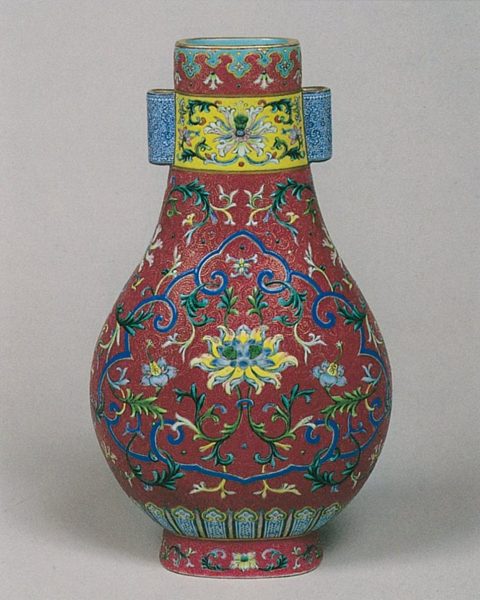
Overview

VASE with Tubular Ears with Design of Floral Scrolls Porcelain with famille rose enamels,
Jingdezhen ware
China, Qing dynasty, Qianlong mark and period (1736–95)
Fencai refers to porcelain decorated in opaque colored glazes applying the technique of cloisonne. This vase was first incised with scrollwork over the entire outer surface and covered in a red glaze, which collected in the grooves, turning a beautiful deep red in the firing. It was made during a period when various techniques were experimented with fencai enamels, and as can be seen, the main motif of peony scrolls are executed using all the colors in the fencai palette.

DISH with Design of Dragons in Underglaze Blue and Overglaze Yellow
Jingdezhen ware
China, Qing dynasty, Kangxi mark and period (1662–1722)
Porcelain vessels decorated in contrasting colors, such as underglaze blue on a yellow ground and green on a red ground, began in the Ming dynasty. They continued to be produced in the Qing dynasty, this piece in underglaze blue and overglaze yellow being one example. Clouds and dragons were first drawn in cobalt blue directly on the clay body, and the background was painted with the same cobalt blue leaving the motifs in reserve. The dish was then covered in a transparent glaze and fired, and finally, a yellow enamel was applied over the glaze onto the motifs left in reserve, completing the design.
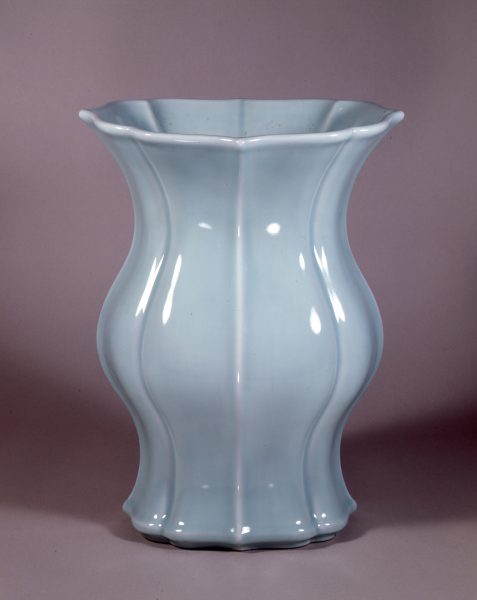
VASE IN FOLIATE SHAPE
Jingdezhen ware China, Qing dynasty,
Yongzheng mark and period (1723–35)
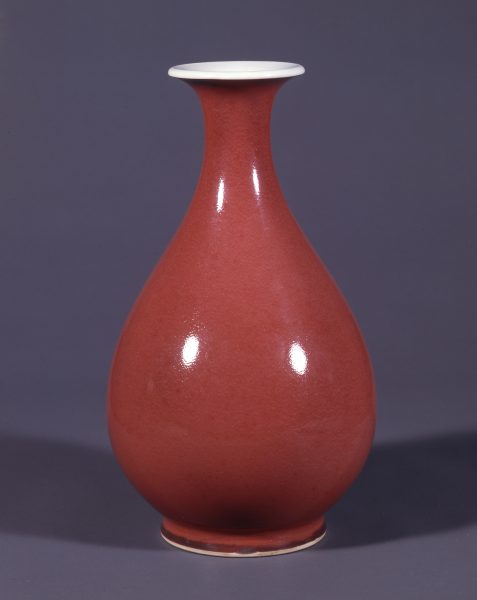
VASE in Underglaze Red
Jingdezhen ware
China, Qing dynasty, 17th–18th c.
A small, but well proportioned yuhuchun (pear-shaped) vase, with gently curving sides and a slightly everted mouth. The vase is evenly covered in a red glaze of a deep rich color, which was achieved with a copper glaze fired in a reducing atmosphere. The mouth rim, the interior, and the backside of the foot are applied with a white glaze, the whiteness of which enhances the brightness of the red color. It is said that this type of vessel is very difficult to make and requires the highest of skills.
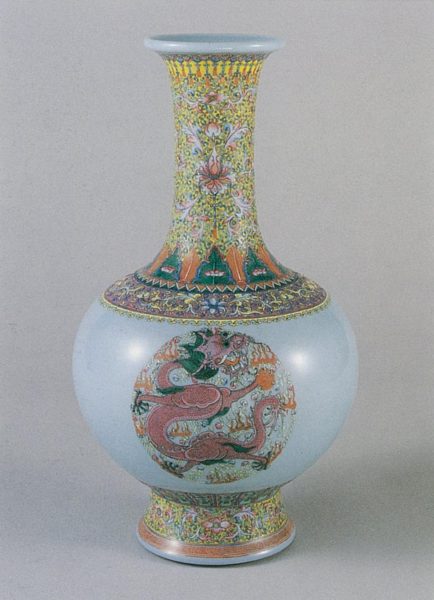
VASE with Design of Dragons in Famille Rose Enamels
Jingdezhen ware
China, Qing dynasty, Yongzheng mark and period (1723–35)
Douqing is a type of porcelain produced in the imperial kilns during the Qing dynasty featuring a faintly blue ground. Because its color resembled that of broad beans, the glaze was named douqing or “bean green” and was highly praised for its pure beautiful tone. The illustrated vase has a douqing ground and is decorated on three sides of its body with dragons and around the shoulder, neck and foot with flowering plants in opaque enamels called fencai or “pale colors”. Applying the technique of cloisonne at the time fashionable in Europe, the painter has beautifully decorated the piece using the fencai pallet in a wide range of colors in a variety of tones and shades.
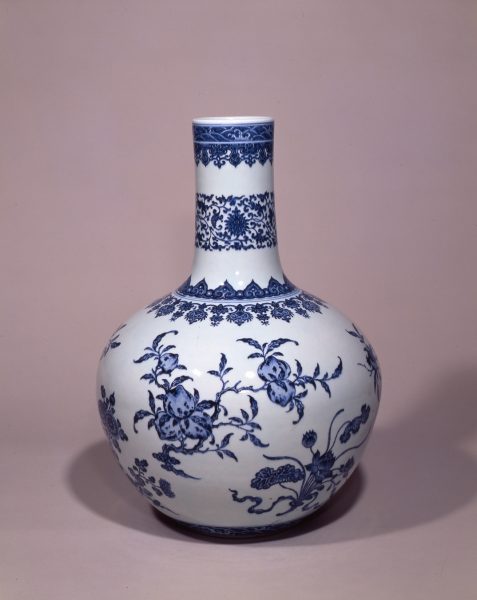
VASE with Design of Flowers and Fruits in Underglaze Blue
Jingdezhen ware
China, Qing dynasty, Qianlong mark and period (1736–95)
During the Qianlong period, blue and white ware was produced in great quantity in the imperial kilns for the palaces and imperial villas that were being constructed. Illustrated is a well-proportioned tenkyuhei (tianqiuping) vase with a globular body and a thick tubular neck imparting a dignified elegance. During the Qing dynasty, energies were directed to the selection of the finest clays and cobalt pigments. This vase is decorated with auspicious motifs of pomegranates, lotus flowers, chrysanthemums and persimmons precisely executed in a pictorial manner in gentle tones of cobalt blue used most effectively in light and dark shades.
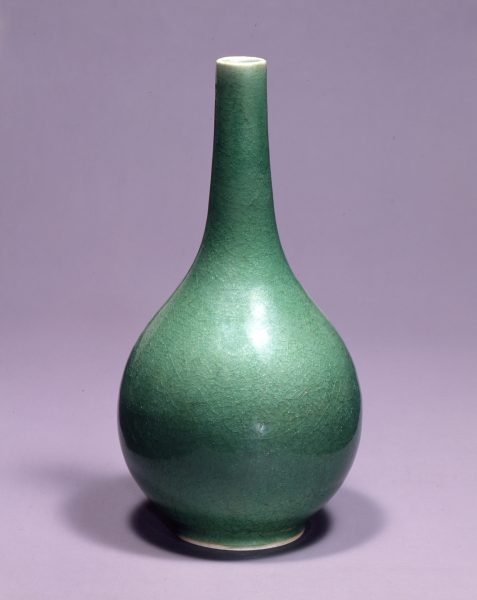
BOTTLE
Jingdezhen ware
China, Qing dynasty, 17th–18th c.
